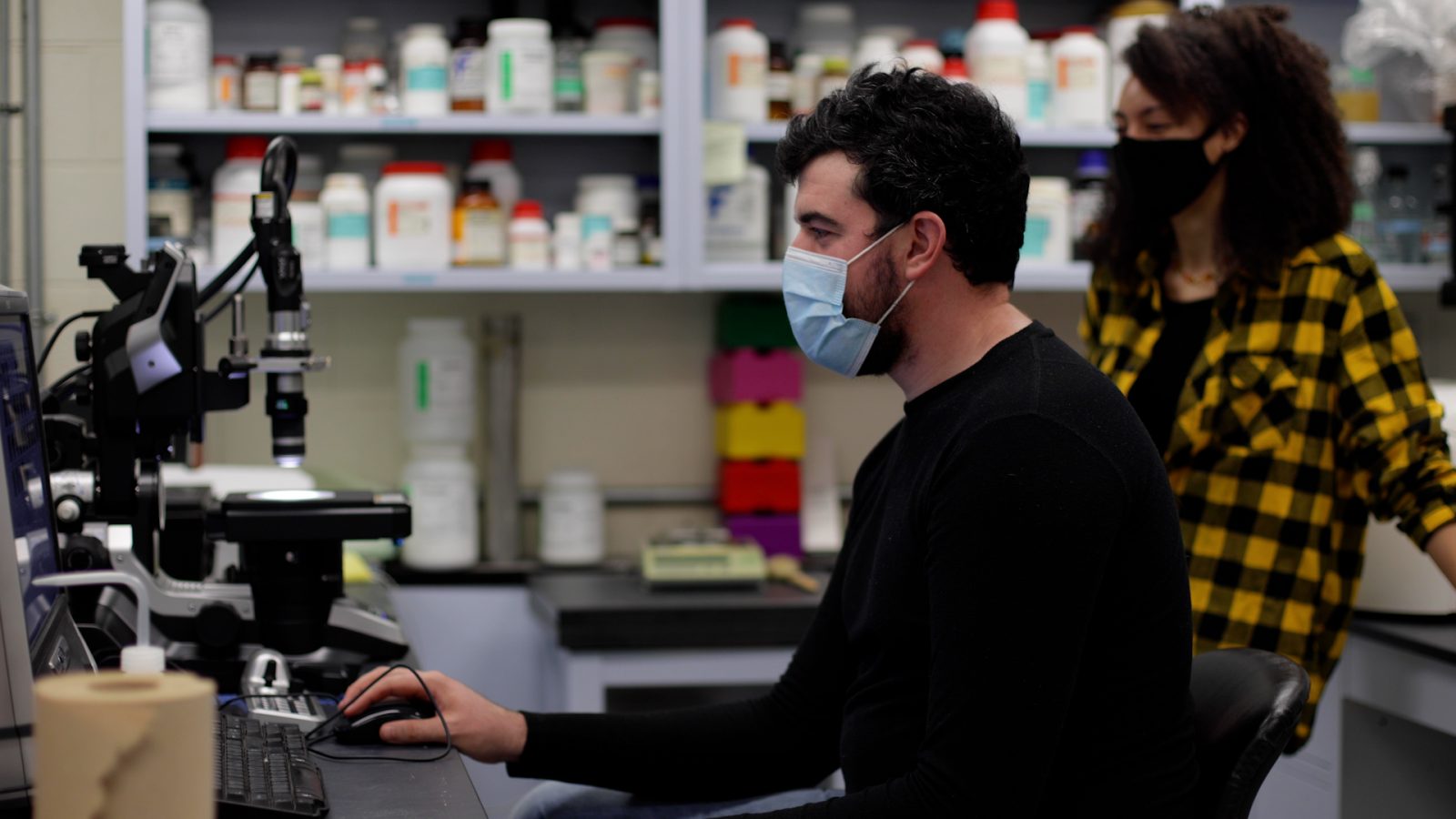Click the link to read the article in the Brock News

Or go straight to the Youtube link.
Thanks to Brock University for making this video!
Click the link to read the article in the Brock News

Or go straight to the Youtube link.
Thanks to Brock University for making this video!
I love playing with DNA sequences, so we do molecular biology in the lab and often we get to play with sequences or microsatellite genotypes. Usually we do this for population genetics (e.g. great work by Jess Vickruck), so the actual molecules or sequences are secondary. Recently, we started thinking about the molecules themselves, instead of just using them as tools. A few years ago we decided that we needed some genome sequences of our own and jumped into the brave new world of Bee-o-Informatics (I can do silly puns, at least!). However, my own bioinformatics skills are just enough to keep me ahead of the undergrads in my Molecular Ecology course. Our new projects are collaborations with Brock colleagues, namely molecular biologist, Adonis Skandalis, and molecular evolutionist, Ping Liang. And of course, we need a grad student to lead the way.

Madiha Hafeez is our first student to focus on molecular evolutionary topics. She came to us a year ago from Pakistan and has been busily curating a great data set over the last few months. She has assembled, tracked down, corrected, and generally curated vitellogenin sequences for 40 bee species, thanks in large part to the generosity of Sarah Kocher and her lab at Princeton University. Some really interesting results are just starting to come in – we’ll keep you posted! In her spare time, Madiha is also a really good bee observer and is helping Lyndon Duff keep track of carpenter bees in the field.
 Long-term field studies of animal populations generate some of the most interesting results in ecology, because they reveal cross-generational linkages between behavioural strategies and reproductive success. Long-term studies are almost always done on vertebrates, because biologists can find, mark and identify the same individuals and their offspring, year after year. That’s a lot harder to do with insects, which are small, highly mobile, and often impossible to follow in their natural habitat for more than a few minutes or hours at a time. Bees are an exception because they make nests that females return to all season. Eastern carpenter bees are even more exceptional, because they are philopatric, reoccupying nests for generations. This means we can track them and their offspring, year in and year out.
Long-term field studies of animal populations generate some of the most interesting results in ecology, because they reveal cross-generational linkages between behavioural strategies and reproductive success. Long-term studies are almost always done on vertebrates, because biologists can find, mark and identify the same individuals and their offspring, year after year. That’s a lot harder to do with insects, which are small, highly mobile, and often impossible to follow in their natural habitat for more than a few minutes or hours at a time. Bees are an exception because they make nests that females return to all season. Eastern carpenter bees are even more exceptional, because they are philopatric, reoccupying nests for generations. This means we can track them and their offspring, year in and year out.
MSc/PhD student Lyndon Duff has been marking, observing, and genotyping eastern carpenter bees for 4 years at an aggregation that Jess Vickruck studied for 3 years. Here he shows off his newly designed carpenter bee dattractor, which might work a lot better if it would stop raining for more than 2 days in a row!